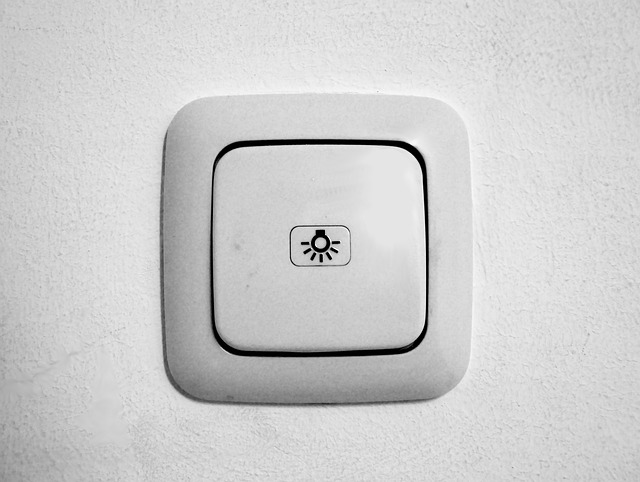
With everything going on in our lives, it is easy to forget about our light switches and doorknobs while cleaning. These seemingly harmless surfaces help us move around and give us access to different areas, but because we use them so often, they can become hotspots for bacteria, viruses, and germs. In this day of increased awareness about home hygiene, it is important to take a comprehensive approach to cleaning that goes beyond visible surfaces. Since light switches and doorknobs are high-touch areas, extra care must be given to them in order to maintain a safe and healthy home for you and your loved ones.
This in-depth guide will cover the significance of cleaning and disinfecting these fundamental home components. From comprehending the typical paths taken by germs to investigating fundamental cleaning methods and selecting appropriate disinfectants, we will provide you with the information and useful advice required to keep your home’s touchpoints spotless.
Join us as we explore the subtleties of keeping a hygienic home by concentrating on these frequently disregarded areas. At the end of the guide, you will have the knowledge and skills required to convert your light switches and doorknobs into shining examples of cleanliness, thereby promoting a safer and healthier living environment for you and your family.
The Importance of Cleaning and Disinfecting
1. High-Touch Surfaces 101
Light switches and doorknobs are among the most touched surfaces in your home. Regular cleaning and disinfecting help reduce the risk of spreading illnesses and maintain a hygienic living space.
2. Common Pathways for Germs
Germs, viruses, and bacteria can easily transfer from your hands to these surfaces, creating potential hotspots for infection transmission. Understanding the importance of regular cleaning is the first step towards a healthier living environment.
3. Daily Hygiene Practices
Incorporate the cleaning of light switches and doorknobs into your daily hygiene routine. This simple habit can significantly contribute to the overall cleanliness of your home and the well-being of its occupants.
4. Household Safety
In addition to health considerations, maintaining clean and disinfected surfaces enhances general household safety. A clean environment reduces the risk of slips and falls, especially in areas with frequently used doorknobs.
5. All-Inclusive Approach
Remember that a holistic approach to cleanliness is essential. In addition to light switches and doorknobs, consider regularly cleaning other high-touch surfaces such as remote controls, cell phones, and kitchen appliances.
Basic Cleaning Techniques
Simple Daily Cleaning
Start with a daily cleaning routine using a mild, soapy solution and a soft cloth. This helps remove surface dirt, fingerprints, and other common contaminants. Ensure the cloth is damp, not soaking wet, to prevent damage to electrical components.
Gentle Brushing
For intricate doorknob designs or light switch crevices, use a soft-bristle brush to dislodge hidden dirt. Pay attention to corners and edges, where germs may accumulate.
Microfiber Magic
Microfiber cloths are excellent for trapping and removing bacteria. Use them to wipe down switches and doorknobs for a quick and effective clean. Microfiber also minimizes the risk of scratches on surfaces.
Non-Abrasive Cleaning
Avoid abrasive cleaning materials, as they can damage the finish of your light switches and doorknobs. Opt for soft materials to preserve the integrity of the surfaces.
Regular Inspection
Frequently inspect light switches and doorknobs for signs of wear, discoloration, or damage. Promptly address any issues to prevent further deterioration and maintain a clean appearance.
How to Choose the Right Disinfectant
Alcohol-Based Disinfectants
Alcohol-based disinfectants, such as isopropyl alcohol, are effective against a wide range of germs. Apply a small amount to a cloth and wipe down surfaces. Ensure the disinfectant contains at least 70% alcohol for optimal effectiveness.
Disinfectant Wipes
Convenient and readily available, disinfectant wipes are pre-soaked with a disinfectant solution. Swipe the wipes across light switches and doorknobs, making sure to cover the entire surface. Dispose of used wipes properly.
Bleach Solution
For a DIY disinfectant, mix one tablespoon of bleach with a gallon of water. Dampen a cloth with the solution and wipe down switches and doorknobs. Follow up with a water-dampened cloth to remove any bleach residue.
Hydrogen Peroxide
Hydrogen peroxide is an effective and eco-friendly disinfectant. Apply it directly to surfaces or use a cloth soaked in hydrogen peroxide. Allow it to sit for a few minutes before wiping dry.
Natural Disinfectants
Lemon juice, vinegar, and essential oils like tea tree oil have natural antibacterial properties. Mix these ingredients with water and use them as an alternative to chemical-based disinfectants. Note that natural solutions may have a milder effect.
Thorough Disinfecting Techniques
Targeting High-Risk Areas
Pay special attention to high-risk areas, such as frequently used doorknobs and light switches near common areas. These spots require more thorough and regular disinfecting to minimize the risk of germ transmission.
Deep Cleaning Schedule
Establish a deep cleaning schedule for light switches and doorknobs. Depending on the traffic in different areas of your home, you may need to disinfect these surfaces more frequently. Consider a weekly deep clean for high-traffic areas.
Electronic Light Switches
For electronic or touch-sensitive light switches, follow manufacturer guidelines for cleaning. Use a soft, non-abrasive cloth and avoid excessive moisture around electrical components.
Removing Hardware
If possible, remove doorknobs to clean and disinfect more thoroughly. This allows access to hidden areas where germs may accumulate. Ensure you know how to reassemble the hardware correctly.
UV-C Light Devices
Consider using UV-C light devices designed to kill bacteria and viruses. These devices can be waved over light switches and doorknobs for an added layer of disinfection. Follow safety guidelines provided by the manufacturer.
Additional Tips for Maintaining Clean Surfaces
Teach Proper Hygiene
Educate household members, especially children, about proper hand hygiene. Encourage them to wash their hands regularly and use hand sanitizer before touching common surfaces like light switches and doorknobs.
Entryway Hygiene Station
Create a hygiene station near entryways with essentials like hand sanitizer, disinfectant wipes, and a trash bin. This encourages everyone entering the home to clean their hands and wipe down commonly touched surfaces.
Pet Hygiene
If you have pets, be mindful of their hygiene. Wipe down doorknobs that they may touch with their paws. Regularly clean pet bowls and ensure that pet-related areas are well-maintained.
Consider Smart Solutions
Explore smart home solutions, such as motion-activated lights or smart locks, to minimize physical contact with switches and doorknobs. These innovations can reduce the need for frequent cleaning.
Seek Professional Help
If you have concerns about the proper cleaning of specific materials or fixtures, consult with professionals. Electricians or hardware specialists can provide advice on maintaining electronic switches and intricate doorknob designs.
Conclusion
To sum up, keeping clean and disinfected light switches and doorknobs is essential to creating a safe and healthy living environment. You can minimise the likelihood of germs spreading throughout your home by implementing basic daily cleaning routines, selecting appropriate disinfectants, and implementing thorough disinfecting techniques. When you combine awareness, hygiene practices, and routine maintenance, you will create a home that puts its occupants’ health first.
In this day and age of increased awareness about home hygiene, it is critical to adopt a comprehensive approach to cleanliness that extends beyond visible surfaces. Light switches and doorknobs, being high-touch areas, require special attention to ensure a safe and healthy living environment for you and your family.







